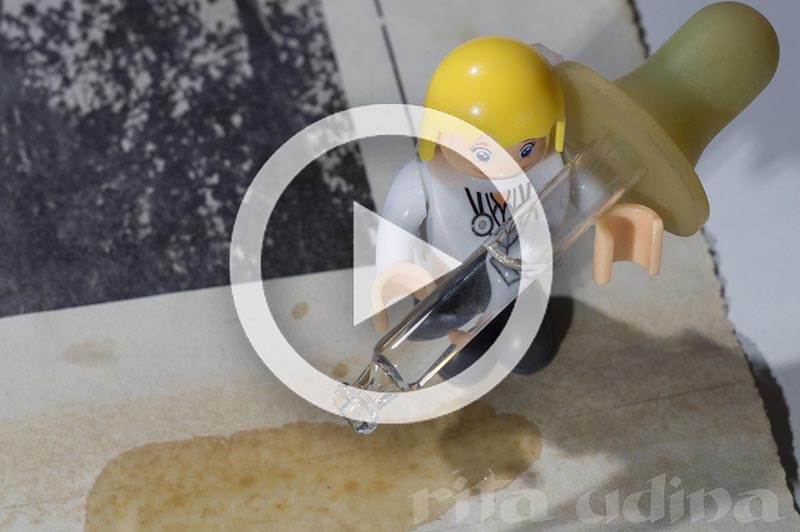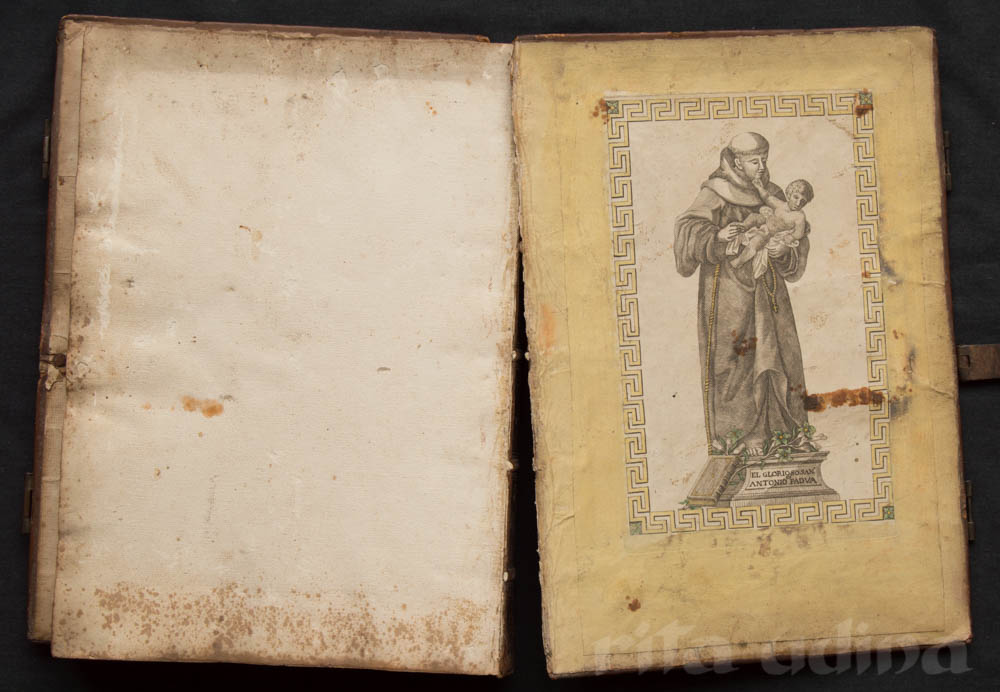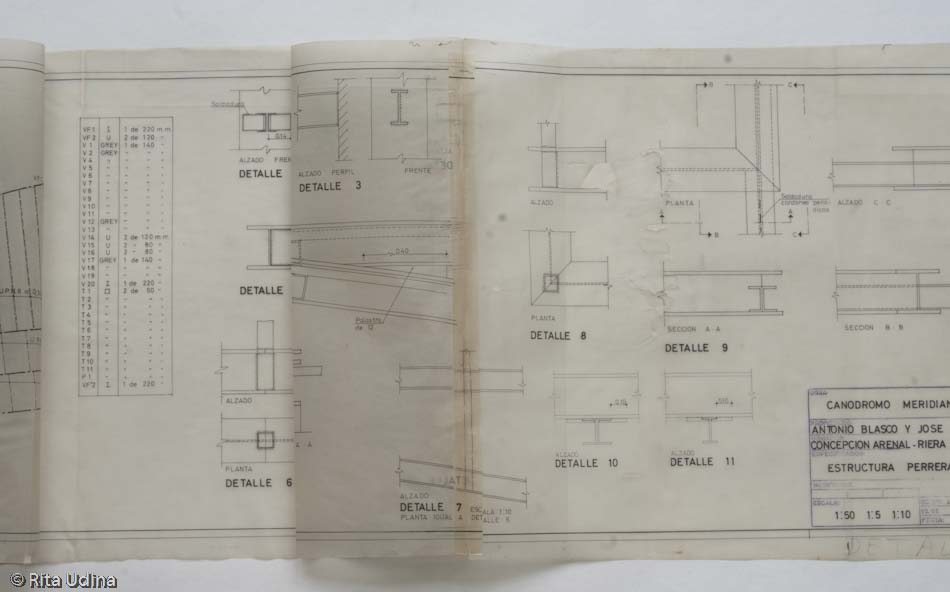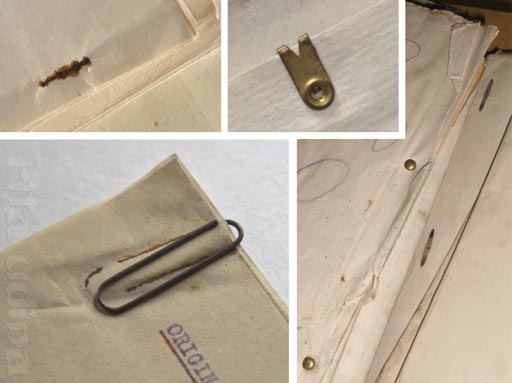surface cleaning
Find below the blog posts related to surface cleaning:
Premiere of the video of the conservation treatment of a map
Premiere of the video showing the full conservation treatment of an oversized hand-coloured map, varnished and lined on a canvas. Do not miss it! Next Thursday 27 at 4pm CEST (UTC+2).
A midnight lockdown paper conservation dream
A lockdown is kind of stoping any activity, and that is what I have done, a stop-motion video, showing the full conservation treatment of a paper document.
Silver Mirroring Removal in Photographs (Video)
At last a deffinitive method, safe and efficient for silver mirroring removal in historical photographs. This new treatment will change the way the issue of silver mirroring removal has been addressed in photographic collections. See it in this video and value the results.
Unlocking St. Anthony’s locked manuscript
"Tony, Tony, come around, something’s lost and can’t be found!" Some manuscripts require more than just manual skills to succeed in their conservation, and so we prayed to Saint Anthony to help us unlocking the bookbinding, whose key had been lost forever. Certainly not many renaissance bookbindings have an iron safety lock in their covers and thus this extra holly help was deemed quite necessary. The prayer didn't provide any key, but at least a satisfactory conservation solution was achieved!
Gels, microemulsions and nano-systems applied to pressure sensitive tape removal: latest updates
Tape removal, chemical and physical gels, microemulsions and much more. Review and abstract of the conference "Nanosystems. Application to tape removal on cellulosic supports,", which took place in Madrid (Spain), on June 6 to 8th, 2018; within the context of NanoRestArt, the european Research and Developement project.
“Customized” conservation with Richard Wolbers
Fellows of joys and sorrows, conservators, here is why I am so excited with the "Cleaning workshop: Paper bathing/stain removal", given by Wolbers: The idea is to make every conservation treatment a kind of custom-made dress for each particular object with a minimal initial investment. He speaks about solvents, gels, surfactants, conductivity and pH. Nor in my wildest dreams had I imagined such a close, easy and useful chemistry. Thanks a lot Richard, we owe it to you.
Chemists and conservators: a love/hate relationship
A cathartic experience: There's nothing more exciting for a conservator such as participating in a chemistry course. We go there with a certain respect (or maybe fear) and the will to be acquainted to a new miraculous reactant that will change our life. The poor conservator will poorly be able to discuss one to one with a chemist, either about the reactions that happen during the restoration treatments or along the inherent ageing of the artefact; and yet we must call the chemist into question and keep this dialogue alive. But thanks to Richard Wolbers I made peace with chemistry and their scientists.
Posters conservation: virtual inpaint vs “virtuous” retouching
The bike riders from Sants reached my studio squeaking, rather than cycling! Tears, foxing, discolouration, brittleness, acidity... All these damages have been carefully restored in order to let the splendorous riders finish line at the Municipal Archive of Barcelona. They are almost centenarian... and yet they ride wild along the repository! I'll explain which beauty and health treatments these illustrated posters have passed through
New conservation methodolgy to retrieve lost flexibility to brittle tracing paper
Approach to a new methodolgy to retrieve the lost flexibility to brittle paper. Tracing paper -so usual among technical drawings- have in common their transparency, but there are significant differences in the process to make them. The properties and behavior will be very different then. Impregnated papers, for an instance, were applied oils or varnishes to provide them translucency. Explanation restoration of several drawings in which the varnish was removed to replace it later.
Damned “sellotapes”!
Which damages cause sellotapes? Can we release documentary heritage from these fatty strips? Explanation for the degradation mechanisms of this historic "remedial" tapes that we can find in documents of all kinds, and restoration possibilities in each case.
Nanotechnology & chemical gels applied to paper conservation
What are nanoparticles and chemical gels? Latest technological advances in restoration of archive material is about nanotechnology and chemical gels and so it is studied in the paper & books section of the IPCE.
- Minimal intervention on “Serra & Balet” documents GalleryClips, grapes i altres elements potencialment nocius Clips, staples and potential damages Clips, grapas y potenciales patógenos" data-title="Clips, grapes i altres elements potencialment nocius Clips, staples and potential damages Clips, grapas y potenciales patógenos" data-caption="">
Minimal intervention on “Serra & Balet” documents
Standard treatment of minimal intervention on documentation with slight damages: Disinfection, removal of clips and staples, consolidation and folder to fit.
TBO: industrial heritage documents rescued from being lost
[untranslatable!!!] ¿Un tresor documental trobat [...]
Silver-gelatine photographs conservation
New Elimination Procedure for Silver Mirroring. Silver mirroring is a type of deterioration that appears in most gelatin developing-out paper (DOP) historical photographs and black-and-white films. Its treatment involves so many problems that it has often been ruled out. In this article we present a new and simple elimination procedure, which is efficient and offers stable results in the long term. The study of the causes of the formation of silver mirroring sheds light on aspects that had been little explained so far: the fact that this type of deterioration always appears on the surface of the image leads us to consider a mechanism of transport of electrical charges.
Glass plate conservation (I)
Glass plate photograph conservation (I) Types of damages (silver mirroring, tapes, fingerprints), and how to properly store photogrpahs in four flap envelopes.
Categories
ARTEFACT
archive or library
book
book structures
bundle
headband
hollow back
limp-vellum binding
locks
sewing
tight back
document
seal
lacquered seal
printed stamp (see TECHNIQUE)
drawing
manuscript
photograph
albumen
daguerreotype
glass plate
silver gelatine
plans, maps, architectural or technical drawings
maps
plans
poster
DAMAGES
acidity / oxidation
bibliopath - graphopath
Bookbugs (pests & paper eaters)
insects
silverfish
woodworm
microorganisms
mold
disaster
flood
foxing
losses, gaps
pressure sensitive tapes
silver mirroring
structural
wrinkles
MATERIAL
fabric
cotton
silk
velvet
glass
leather
parchment
metal
paper
coated paper (art paper)
Kraft paper
laid paper
rag paper
tracing paper
impregnated paper
onion skin paper
Washi
wood pulp paper
plastic
cellulose acetate
polyethylene terephthalate (PET)
Polypropylene (PP)
wood
PRODUCTS
adhesives
natural
shellac
rubber (natural)
starch paste
synthetic adhesives
Filmoplast®
Paraloid B72
rubber (synthetic)
Tylose® (MHC)
gels
agarose
chemical gel
hydro-gels
Klucel®
organo-gels
physical gels
Velvesil Plus
xanthan gel
nanoparticles
solvent
benzyl alcohol
ciclometicone
diethyl carbonate
dimethyl sulfoxide (DMSO)
polyethylene glycol (PEG)
surfactants
TECHNIQUE
ballpoint pen
collage
felt-tip pen
gouache
graphite (pencil)
ink
print
engraving
etching
lithograph
woodcut
printed stamp
reproduction
diazotype
watercolour
THEORY on cons. & rest.
TOOLS, MACHINES
TREATMENTS
bleaching
light bleaching
cleaning
stain removal
surface cleaning
tape removal
varnish removal
wet cleaning
deacidification
digitization
flattening
flattening under tension
housing (storage)
box
folder
four flaps envelopes
inpainting
mimetic in-painting
neutral colour in-paint
mould treatment
preventive conservation
climate (HR, temp.)
re-binding
reinforcement - consolidation
backing with fabric
Infilling
leafcasting
ink fixing
lining
sizing
tear repair
varnishing







































